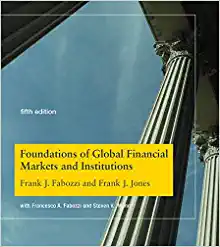Question
Microeconomics questions.answer them well. A life office issues a three-year unit-linked endowment policy to a life aged exactly 60. The annual premium is 2,000, payable

Microeconomics questions.answer them well.
A life office issues a three-year unit-linked endowment policy to a life aged exactly 60. The
annual premium is 2,000, payable at the start of each year. The allocation proportion is
90% in year 1 and 97% thereafter. At the end of year of death during the term, the policy
pays the higher of 10,000 and the bid value of units allocated to the policy, after deduction
of the fund management charge. A bonus of 2% of the (bid) value of the unit fund is payable
at maturity. The life office makes the following assumptions in projecting future cash flows:
Mortality A1967-70 ultimate
Initial expenses: 300
Renewal expenses: 50, incurred at the start of the
second and the third years
Fund management charge: 2% per annum, taken at the end of each year
before payment of any benefits
Sterling fund interest rate: 4% per annum
Bid/offer spread: 6%
Unit fund growth rate: 10% per annum.
Construct tables to show the following:
(i) the growth of the unit fund;
(ii) the profit signature, assuming that no sterling reserves are held;
(iii) the profit signature after taking into account sterling reserves, given that the sterling
reserves per policy are to be 36.48 before receipt of the premium due at time 1 year and
78.64 before receipt of the premium due at time 2 years.
In each case, indicate clearly how you calculate your table entries. Ignore the possibility of
surrenders.
(a) In the context of profit-testing of unit-linked business, define the following terms briefly:
(i) the Unit Fund,
(ii) the Sterling Reserves,
(iii) the profit vector of a policy,
(iv) the profit signature of a policy,
(v) the risk discount rate, and
(vi) zeroisation of Sterling Reserves.
(b) A life office issues a large number of identical 4-year annual premium unit-linked endowment assurances to lives aged 65. According to the office's calculations, the profit vector per
policy sold, ignoring withdrawals and assuming that no Sterling reserves are maintained at
the end of each year, is as follows ():
191.12
?111.45
?3.28
10.95
The office's mortality basis is A1967-70 ultimate, and Sterling Reserves earn interest at 5%
per annum.
Calculate
(i) the profit signature per policy sold, ignoring any need to maintain Sterling

Step by Step Solution
There are 3 Steps involved in it
Step: 1

Get Instant Access to Expert-Tailored Solutions
See step-by-step solutions with expert insights and AI powered tools for academic success
Step: 2

Step: 3

Ace Your Homework with AI
Get the answers you need in no time with our AI-driven, step-by-step assistance
Get Started


